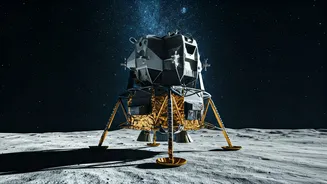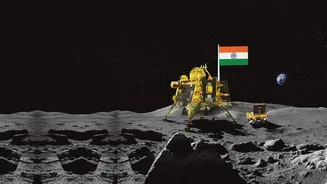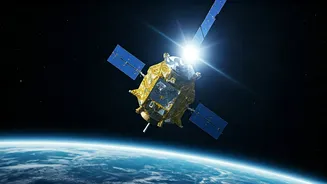Growth & Vision
India is aiming for substantial growth in the global space economy, with ISRO leading the charge. The current Indian share of the global space economy stands
at approximately 2%, and the goal is to increase this to 8% by 2030. India's space economy, valued at around USD 8.2 billion presently, is projected to surge to USD 44 billion by 2033. Globally, the space economy is considerable, currently worth about USD 630 billion, with expectations of it reaching USD 1.8 trillion by 2035. This growth will be facilitated by increasing spacecraft production and advancements in technology.
Gaganyaan & Beyond
The Gaganyaan mission, India's inaugural human-spaceflight endeavor, remains a key focus. The timeframe for uncrewed missions has shifted, but the crewed mission is still slated for 2027. This project aligns India with leading spacefaring nations such as the United States and China, each having their own lunar missions. The government is also keen on achieving the goal of sending Indian astronauts to the lunar surface and bringing them back safely by 2040. Prior to the crewed flight, three uncrewed test missions will be undertaken to ensure safety and mission success.
Lunar Exploration Plans
ISRO is deeply involved in lunar exploration. The Chandrayaan-4 mission is planned for 2028, with the goal of retrieving samples from the moon, a capability currently demonstrated only by the US, Russia, and China. Another significant project is LUPEX, a collaborative lunar polar exploration program with JAXA (Japan Aerospace Exploration Agency). The initial module of this mission is slated for orbit by 2028, with the primary objective being to study water ice at the lunar south pole. This mission signifies ISRO's commitment to in-depth lunar research and international partnerships.
Industry Participation
The Indian space sector has experienced rapid growth following regulatory reforms in 2020. These reforms have facilitated private sector involvement, thereby accelerating rocket development, satellite manufacturing, and commercial launch services. The changes have led to a sharp increase in private participation, with over 450 industries and 330 startups currently active in India's space ecosystem. This represents a huge leap from just a handful of startups a few years ago. Furthermore, ISRO aims to triple its annual spacecraft production in the upcoming three years to meet growing mission demands, and the first PSLV entirely made by the Indian industry will be launched.
Upcoming Missions
ISRO has an active schedule with several upcoming launches planned. The organization plans to execute seven more launches before the current financial year concludes, including commercial communication satellites and various PSLV and GSLV missions. The mission lineup shows a mix of scientific exploration, commercial endeavors, and international collaborations, highlighting ISRO's comprehensive approach. Also on the horizon is the Indian Space Station, with the goal of its completion by 2035, showcasing India's long-term commitment to space exploration and establishing a permanent presence in orbit.














